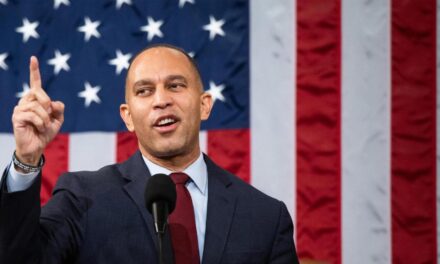This morning, Ed Kilgore ruminates on the contrast between non-statistical political prognosticators like Stu Rothenberg, Charlie Cook, and (heh) S.E. Cupp, who are very bullish on the Republicans’ prospects in the midterms, and more rigorous analysts at 538, the Election Lab, and The Upshot, who began as Republican bulls but become more bearish everyday. There’s also San Wang of the Princeton Election Consortium who has been bullish on the Democrats from the beginning, and remains so.
The thing to remember here is that if you are going to compare the bias of liberal statisticians to the bias of conservative pundits, the statisticians have a built in advantage in that they are mainly driven by data. They may make assumptions based on “feel” but they are less susceptible to letting their heart determine their predictions. In other words, the statisticians have an anchor that keeps them from sailing very far afield from reality. This is not true for Stu Rothenberg, who just last week allowed himself to get caught up in irrational exuberance.
Both Rothenberg and Cook are well-respected analysts who have a reputation for disinterested prognostication, but they both have a clear record of overestimating the Republicans’ strength. S.E. Cupp is a partisan hack with no demonstrated record of predicting anything accurately.
A long time ago I predicted that the Democrats would win every competitive Senate race. I’ve had to back off of that because the data in Kentucky don’t support that conclusion right now. Unforeseen events in Montana also caused that election to fall out of the competitive category. And, while I was one of the first to realize that Kansas could become competitive, I only foresaw that about a week before it became a reality, and only with the assistance of Sam Wang.
But there were concrete reasons that I thought that Kay Hagan, Jeanne Shaheen, Michelle Nunn, Mark Pryor, Mary Landrieu and Mark Begich would win, regardless of what the early polls were saying. And those reasons were a combination of the weakness of opponents and the historical strength of either the candidates or the candidates’ families in their particular states. The Nunn, Pryor, Landrieu, Grimes, and Begich families have a long history in their respective states that gives them strong cross-over appeal. In the case of Landrieu, she has a lot of support from the business community and, as Chairwoman of the Energy Committee, she’s invaluable to the oil and gas industries. In the case of Shaheen, she’s a popular ex-governor with a record of competence free from any whiff of scandal. In the case of Hagan, her opponent is the incredibly unpopular Speaker of the incredibly unpopular North Carolina House. With the exception of Michelle Nunn and Alison Lundergan Grimes, these are also incumbents who have large financial advantages over their opponents.
These are concrete race-specific reasons for favoring the Democrat in the race, and I am not at all surprised that the polls have stubbornly exceeded expectations, even in Kentucky where Grimes has fallen a little bit behind. Those who relied on historical markers or polls about the president’s popularity have been forced to respond to the difference between their expectations and reality, but the statisticians (excepting Wang, who did not rely on those factors) have seen their models move towards reality. Meanwhile, Rothenberg has to explain why the results he predicted and the momentum he observed have become become less likely (in the former case) and proven non-existent (in the latter) in the models.
Good analysis requires a reliance on polling analysts combined not with historical markers but with very race-specific inspection.






